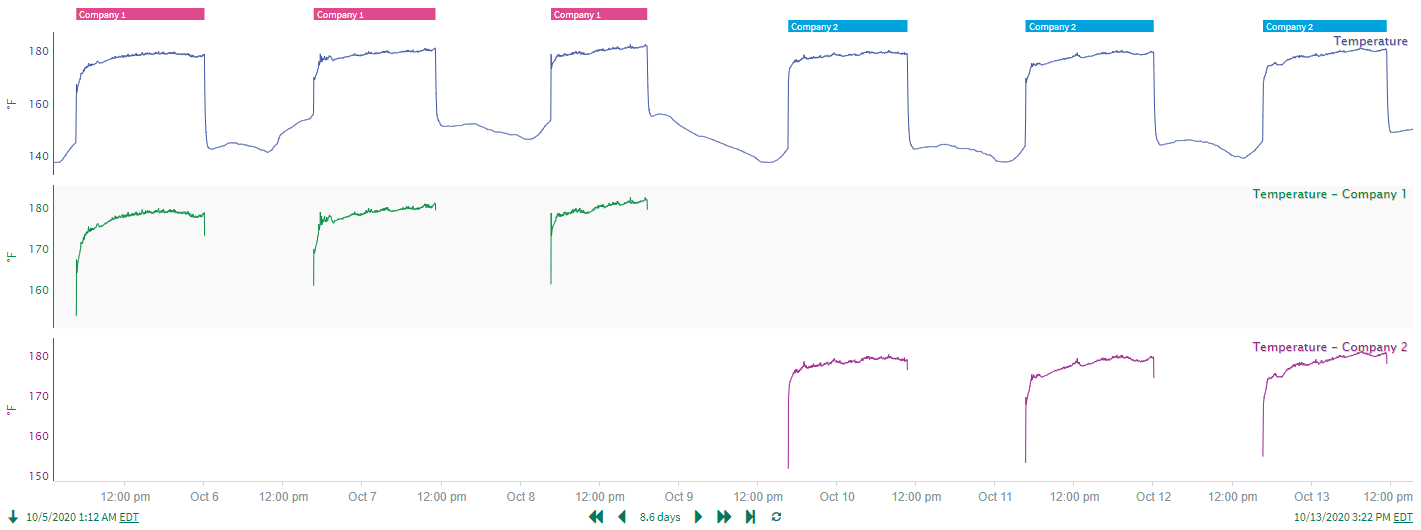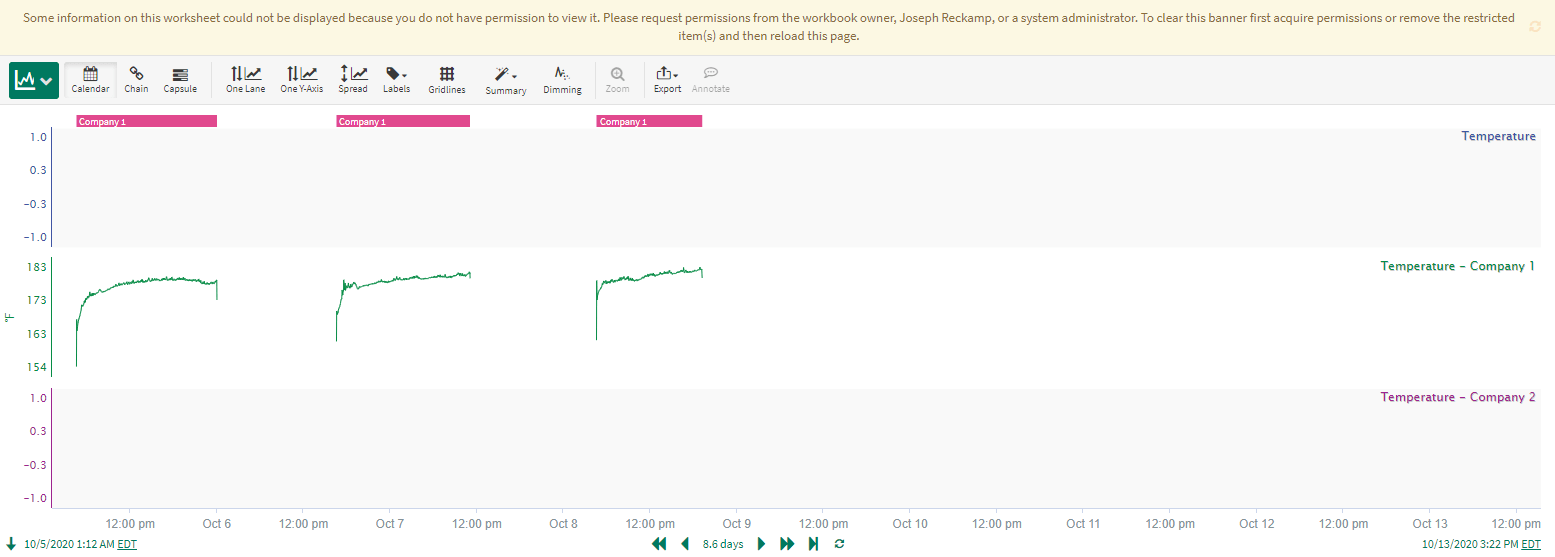
Contract Manufacturing – Sharing Data for a Competitive Advantage
Outsourcing Manufacturing with Safe and Efficient Data Access
In the process industries, manufacturing requirements for an individual company can vary significantly over time due to lengthy research and development timelines and differences in market demand compared to forecasts. In pharmaceuticals, for example, companies may not have the capital or desire to invest in and build a manufacturing plant for their products as their expertise lies in research and development. Whether a smaller biotech or a large-scale producer, they must also contend with patent expirations on their most profitable drugs. These uncertainties for both big and small pharma have led to a significant increase in outsourcing of clinical and commercial manufacturing to contract manufacturing organizations or CMOs. While the pharmaceutical industry has seen a dramatic increase of projects being outsourced in recent years, contract manufacturing is also prevalent in many other industries including food and beverage, semiconductors, and upstream oil and gas.
Enabling Seamless Data Access
One major challenge with outsourcing manufacturing is data access. While the CMO is responsible to the client to meet the guidelines of the outsourcing agreement, the client ultimately has their brand and name on the final product, leaving them liable for any manufacturing quality issues. To mitigate this risk, the client often requires exports of the raw manufacturing data to prove that all critical process parameters, or CPPs, were within the registered ranges for each batch. In an ideal world, the CMO data for a particular client would automatically be transferred securely into the client’s system including context to the data within a specified latency period as defined by the CMO-client relationship. However, the data collection and sharing process can be a pain for both the CMO and client.
To share the data, the CMO needs to collate data from multiple systems: – time-series process data tags, laboratory results, calibration, maintenance, raw material information, orders, lot numbers, and more. Within each of those systems, the CMO must isolate the data being provided to the client to solely the data that represents the client’s campaign, ensuring that any other client’s information is removed. In general, sharing data on the CMO side is often manual and time consuming, resulting in the data typically taking days or weeks to transfer to the client.
On the client side, they often receive multiple spreadsheets of data that makes it difficult to aggregate between the various data sources to visualize, perform analytics, and confirm the results. The controlled delays and slow data transfer also means that the client has low visibility into the process in real-time, limiting effectiveness of being able to make process improvements between batches without being on-site at the CMO to watch the process, live and in-person.
Ensuring Safe and Efficient Data Transfer
Seeq facilitates this data transfer in a quick, easy, and visual approach by connecting to the disparate data sources and automatically aggregating the data based on time. From there, the data can be sliced and diced to provide the desired data set to the client. For example, if we have a temperature signal and capsules representing when batches ran for each client, we can split that signal into two separate signals representing only the data to which each client can access (See Figure 1). From this point, there are three common methods of sharing the data: (1) utilizing integrated security to provide controlled access, (2) move the data between CMO and client Seeq Servers, or (3) exporting cleansed data to Excel for sharing.

Option 1: Integrated Security
With Seeq’s Integrated Security feature, user access control can be limited for entire data sources, workbooks, or even down to the item level on a user or group basis. This empowers CMOs to provide Seeq access to their system while restricting access to all raw data sources and only providing access to the appropriate items. For example, a user from Company 1 that logged in to see the same analysis above would only have access to the data for their company, as shown in Figure 2. From here, the client would be able to perform analytics or export the data.

In addition to aggregating and isolating the data, one major advantage of using Seeq to share data between companies is that you can share much more than just the raw data. Most of the time, both the CMO and client are performing the same analytics on the data to determine whether the CPPs remained in the registered ranges or comparisons between batches in a campaign. Thus, both companies could save time and energy by sharing the analytics and discoveries.
Option 2: Move Between Seeq Servers
To leverage Integrated Security, the clients would need to be able to access the network where the Seeq server resides. If this is an issue with the CMO’s IT security policy or commercial concerns, a secondary option would be to set up a joint Seeq server, or escrow system for sharing of data between the companies. The escrow server could be hosted by Seeq as Software as a Service (SaaS) to control access for both companies. While this escrow Seeq server could host direct data source connections and leverage Integrated Security as noted in Option 1, typically this server would not set up direct data source connections and instead leverage the CMO to push data onto the server via Seeq’s REST API. In this scenario, the data would not be a live connection, but could be pushed on demand with a controlled, defined latency.

With a Seeq-to-Seeq escrow server arrangement, the only data present would be the data being shared between the CMO and client. This setup still empowers the CMO and client to share analytics or reports on the data and the client can compare with current or historical batches from other sites.
Option 3: Export from Seeq
If Options 1 and 2 are not possible for whatever reason, Seeq can still be used to aggregate the data from multiple data sources, cleanse the data, isolate to just when the client’s data is present, and perform any analytics on the data. Seeq then allows multiple options to export the data including Excel for the raw or gridded data, PowerPoint for the visualizations, or PDF for any reports. While this method lacks the interactivity of the data and ability to collaborate on the analytics, this still saves extensive time spent aggregating data from disparate data sources and filtering the data down to just when the client’s batches were running.
Seeq discusses key challenges facing the pharmaceutical industry, such as data sharing between CMOs and clients, with contacts from numerous companies across the industry in Seeq’s Pharmaceutical and Life Sciences Community of Practice. If you have a desire to contribute to these discussions, please join us by registering for the Community of Practice. For further information on setting up an Escrow Seeq Server or discussing the best data sharing approach for your CMO-client relationship, please contact your Sales Executive or email Seeq at [email protected].
Contributing authors: Emily Johnston, Brian Crandall, Dr. Lisa Graham